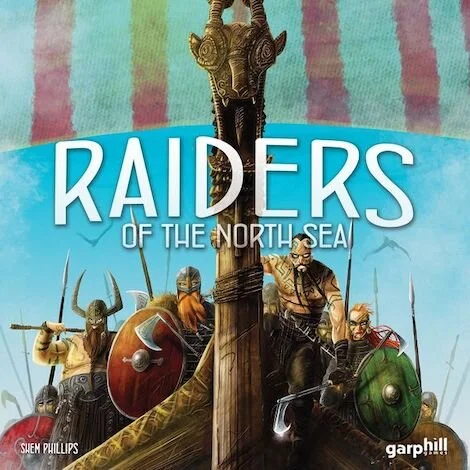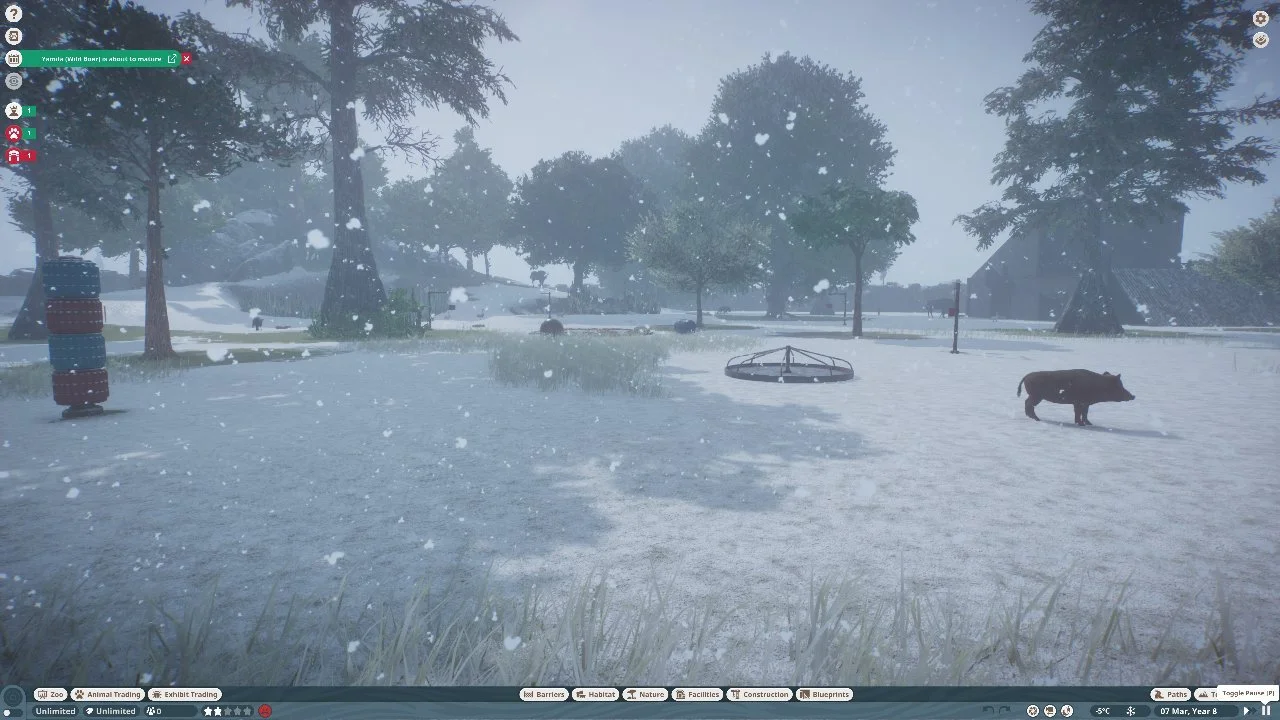Review copy provided by Renegade Game Studios
Raiders of Scythia is the newest game from designer Shem Phillips, who has been creating stylish and engaging worker-placement games since 2015. In anticipation of this upcoming release, which will be available on October 23rd, I reviewed Raiders of the North Sea last week to see what made the classic so much fun and what had changed when raiders shifted from longboats and Vikings to horses and Scythians.
Over the course of five years, Shem Phillips updated and improved his Raiders of the North Sea game to include two expansions and a more robust set of mechanics than what was present at the outset. Now, the celebrated designer has incorporated some of those additions and tweaks into this adventure. It’s a more mature experience, with a new look and new energy.
So, if Raiders of Scythia has taken some of the best from Raiders of the North Sea, is it a better game? Let’s see as we explore the nomadic people of ancient Iran and Europe, who terrorized the peoples of Cimmeria, Assyria, Persia, and Greece.
STORY
Many centuries ago, the Greek, Persian and Assyrian empires controlled vast amounts of land and riches. Yet, despite their fortifications and imposing armies, rumours began spreading of a formidable foe in the lands above the Black Sea. They came on horseback. Fierce warriors, both male and female. Skilled with the sword, axe and bow.
But they weren’t mindless savages. Their artisans were renowned for their ability to craft detailed trinkets of gold. They fashioned leather armour and improvised the recurve bow. They trained eagles for hunting and war. Some even believe they inspired the Greek tales of the Amazons. But they were more than legend or fable.
They were the Raiders of Scythia.
Maybe the Scythians were not mindless savages. Their artisanry and skill with things other than warfare might be of some interest. Later expansions, for instance, might give us a glimpse into this part of the nomadic people. But for now, all that really matters is how good the Scythians were at raiding. Because that’s what this game is about. It’s the name of the game, both literally and figuratively.
Chop up the longboats for firewood, though. These warriors lived on horseback, with eagles overhead to scout and hunt.
And the artwork certainly distances this game from the North Sea trilogy and all other worker-placement games from Shem Phillips. It’s like looking at an ancient mural of warrior tribes. We’re in a different part of the world and you’ll recognize that as soon as you take the game out of the box.
GAMEPLAY
If you’ve read my review of Raiders of the North Sea—or if you’ve played it before—then you could pretty much open up this new box and get started immediately.
It retains so much of the DNA in its predecessor that familiar gamers will feel right at home. It’s also easy enough, however, that it wouldn’t scare off anyone who’s new to Shem Phillips or his games.
The central mechanic is placing a worker and taking that action before picking up a worker and taking that second action. Two workers, two actions. It’s that simple. If the player is raiding instead, then the first worker stays permanently at the targeted Settlement and the second worker is taken from the same location. A condensed turn, but ultimately the same outcome.
Players aim to end the game with the most Victory Points. That’s done by raiding Settlements and completing Quest. Technically, remaining Plunder at the end of the game also counts as Victory Points, but it’s not the main source of those points. To gain the momentum necessary for effective raiding, though, players will need to continually refresh their Crew of Scythians, their inventory of Provisions, and their assortment of Eagles and Horses that reinforce the Crew members.
It’s a simple game with elegant mechanisms.
Where Scythia differs from North Sea, though, is in the additional gameplay elements that align with the straightforward system of hiring Crew members and raiding Settlements. A more involved (and intuitive) wound system replaces the Valkyrie system. The Eagles and Horses upgrade and influence an already-thick deck of Crew cards, enabling more customization and more player choices. The Hero cards give each player their own control over some aspect of the worker-placement actions. The Kumis resource also helps players to make sure that they’ll be able to reach a certain Strength threshold when attacking a Settlement. It’s a nice touch, especially with its connection to recovering Wounds of injured Crew members.
Also, there is a pretty good solo mode that can be used if you’re not able to get it to the table with friends or family. I’m not normally someone who likes to break out a game and play by myself, but it’s a good system that is smooth to use. AI Scheme Cards give an agenda for the opponent and it makes a fun head-to-head fight for players interested in the solo experience.
I really do think the gameplay is better than Raiders of the North Sea. It pulls mechanics and ideas from the base game and the two subsequent expansions and stirs it all up into one big Scythian stew. It tastes good. It goes down easy. And it’s hearty enough that you’ll want to come back for seconds.
VISUALS
This is where Raiders of Scythia lost points for me.
I will be honest upfront. I really like what The Mico has done with the North Sea and West Kingdom trilogies. I love his style, and I think the artwork on those games is just beautiful to look at and lovely to play with.
That being said, I don’t dislike other artists. I love seeing what other artists imagine and create with board games. The art is one of my favorite parts of the tabletop experience. And Sam Phillips has designed some cool characters and a really distinct visual style.
But the combination of the illustrations, color scheme, and iconography made this game somewhat illegible. It can be quite hard to quickly identify what resources are needed on a certain raid, what settlements have been hit, or what powers the Crew members have on a player board. When you focus on the board and the cards, you can read it, but the at-a-glance quality of the visual design is poor. Everything blends together. There was one game in which I didn’t even realize that we needed to trigger the endgame because I couldn’t see that only two settlements remained. Other times I forgot that I had an active Crew ability to utilize because the text blends in with the colors of the cards so naturally.
So, yes, I have an artistic bias given how much I enjoyed The Mico’s work on other Shem Phillips’ games. That’s not what the issue is, though. I think that Raiders of Scythia has a clear visual weakness that will irritate some gamers. It doesn’t change how much fun the gameplay is and the quality of the mechanics, but it does detract from the overall experience.
Additionally, I didn’t care that the layout of the Village and Settlements were inverted from the original Raiders of the North Sea design. When I play a game, I like to have the board facing me. I imagine many gamers feel the same. But the Village is at the top of the board, which is farthest away from where I typically set up player areas.
The raiding progression moves down from the top, rather than up from the bottom, and I didn’t care for that as much. Worker placement in the Village is more frequent than raiding the Settlements, which meant that I was frequently reaching to the farthest part of the board in order to complete an action. I didn’t care for that change.
All in all, the visual design and layout of the game was a disappointment that mars the otherwise smooth and enjoyable playing experience.
REPLAYABILITY
Starting off, this is definitely going to have more replay value than the base game of Raiders of the North Sea.
The gameplay has been dialed up to include a lot of changes that increase variability and guarantee more plays. The main system of raiding—gathering resources, hiring Crew members, and attacking Settlements—is the same but the supplementary mechanics have been enhanced.
The wound system is a little more elegant than the sacrifices to the Valkryie. It reduces the strength of affected Crew members and doesn’t outright kill them. It also connects to the Kumi components…
Which are temporary Strength augments used to help out during a raid when the combination of Crew and rolled dice is not enough to gain the desired Victory Points.
When you’re raiding, the plunder gained has even more relevance than in the North Sea trilogy. Instead of pertaining to mostly quests, you can also use some equipment (and silver) to gain Horses and Eagles, which are permanent bonuses on your player board for Strength, Victory Points, and Crew abilities. These, used in conjunction with Crew cards, means that you’ll be able to create unique combinations of powers.
Also, Hero cards grant powerful abilities that other players won’t be able to replicate. It means that there is something special for each player beyond the numerous possibilities from the other decks.
All of this accomplishes a depth of gameplay that didn’t exist in the original Raiders game. That has been achieved through later expansions, but this game has it from the start! That’s a valuable trait in this worker-placement game that will likely earn it many fans.
WHAT IT COULD HAVE DONE BETTER
I fully expect Shem Phillips to create additional content for this game. But even if he didn’t there would be enough here to satisfy me. It’s a quick, easy, but layered tabletop game with a lot to check out before it gets stale.
What I really want, though, is a second edition that redesigns the visual aspects of the game. It’s a big enough frustration for me that I would want it fixed before really enjoying Raiders of Scythia to the fullest. The poor distinction between iconography and background art dampens the mood a little bit. I love the gameplay. But I don’t love how it looks on the board.
If that was fixed, this would easily replace Raiders of the North Sea for me. But The Mico and the easily-discernable design is going to keep the original on the shelf for me.
It’s the fly in the ointment for me.
VERDICT
While I’m not in love with the artwork and iconography—which clash at times and make visual interpretations of the board slow—there is a lot to enjoy in this evolution of the Raiders blueprint. The wound system, the strength-augmenting Kumis, the clever introduction of Horses and Eagles, and the Hero cards all add something special to this game.
Raiders of Scythia is a plundering good time that honors the games that came before it and sets a precedent for fast-paced and exciting worker-placement games that come after it.
If you want an evolution of the things you loved from Raiders of the North Sea, then this is it. It releases on October 23rd and the die-hard tabletop fans who love component upgrades can even get the metal coins to go along with the raiding extravaganza. Pre-order it now or get it later this month!

























